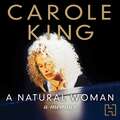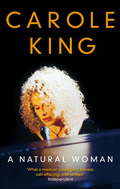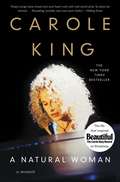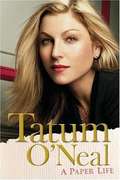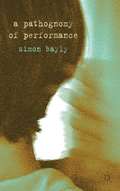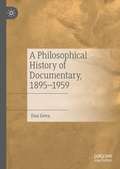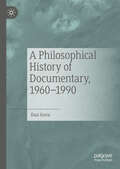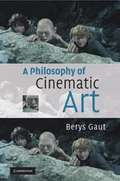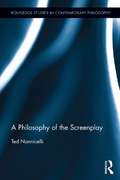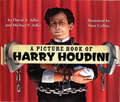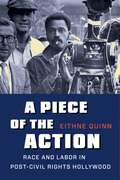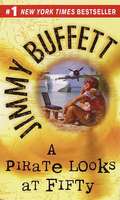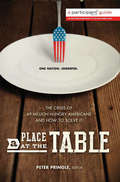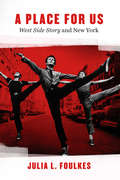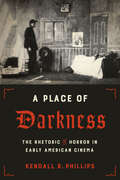- Table View
- List View
A Natural History of the Piano: The Instrument, the Music, the Musicians from Mozart to Modern Jazz and Everything in Between
by Stuart IsacoffA beautifully illustrated, totally engrossing celebration of the piano, and the composers and performers who have made it their own. With honed sensitivity and unquestioned expertise, Stuart Isacoff--pianist, critic, teacher, and author of Temperament: How Music Became a Battleground for the Great Minds of Western Civilization--unfolds the ongoing history and evolution of the piano and all its myriad wonders: how its very sound provides the basis for emotional expression and individual style, and why it has so powerfully entertained generation upon generation of listeners. He illuminates the groundbreaking music of Mozart, Beethoven, Liszt, Schumann, and Debussy. He analyzes the breathtaking techniques of Glenn Gould, Oscar Peterson, Vladimir Ashkenazy, Arthur Rubinstein, and Van Cliburn, and he gives musicians including Alfred Brendel, Murray Perahia, Menahem Pressler, and Vladimir Horowitz the opportunity to discuss their approaches. Isacoff delineates how classical music and jazz influenced each other as the uniquely American art form progressed from ragtime, novelty, stride, boogie, bebop, and beyond, through Scott Joplin, Fats Waller, Duke Ellington, Bill Evans, Thelonious Monk, Chick Corea, Herbie Hancock, Cecil Taylor, and Bill Charlap. A Natural History of the Piano distills a lifetime of research and passion into one brilliant narrative. We witness Mozart unveiling his monumental concertos in Vienna's coffeehouses, using a special piano with one keyboard for the hands and another for the feet; European virtuoso Henri Herz entertaining rowdy miners during the California gold rush; Beethoven at his piano, conjuring healing angels to console a grieving mother who had lost her child; Liszt fainting in the arms of a page turner to spark an entire hall into hysterics. Here is the instrument in all its complexity and beauty. We learn of the incredible craftsmanship of a modern Steinway, the peculiarity of specialty pianos built for the Victorian household, the continuing innovation in keyboards including electronic ones. And most of all, we hear the music of the masters, from centuries ago and in our own age, brilliantly evoked and as marvelous as its most recent performance. With this wide-ranging volume, Isacoff gives us a must-have for music lovers, pianists, and the armchair musician.From the Hardcover edition.
A Natural Woman
by Carole KingThe enhanced ebook includes dozens of exclusive of photos from Carole King's childhood, her own family, and behind-the-scenes images from her performances. It also features a video of the author in the recording studio, and two classic songs embedded within the ebook. A memoir by the iconic singer-songwriter chronicling her story from her beginnings in Brooklyn through her remarkable success as one of the world's most acclaimed musical talents, to her present day as a leading performer and activist. From her marriage to Gerry Goffin, with whom she wrote dozens of songs that hit the charts, to her own achievements, notably with "Tapestry," which remained on the charts for more than six years, to her experiences as a mother, this memoir chronicles one of music's most successful and fascinating stars. The book will include dozens of photos from King's childhood, her own family, and behind-the-scenes images from her performances over the years.
A Natural Woman
by Carole KingA memoir by the iconic singer-songwriter chronicling her story from her beginnings in Brooklyn through her remarkable success as one of the world's most acclaimed musical talents, to her present day as a leading performer and activist. From her marriage to Gerry Goffin, with whom she wrote dozens of songs that hit the charts, to her own achievements, notably with "Tapestry," which remained on the charts for more than six years, to her experiences as a mother, this memoir chronicles one of music's most successful and fascinating stars. The audiobook will include a pdf of dozens of photos from King's childhood, her own family, and behind-the-scenes images from her performances over the years.
A Natural Woman: A Memoir
by Carole KingA memoir by the iconic singer-songwriter chronicling her story from her beginnings in Brooklyn through her remarkable success as one of the world's most acclaimed musical talents, to her present day as a leading performer and activist. From her marriage to Gerry Goffin, with whom she wrote dozens of songs that hit the charts, to her own achievements, notably with 'Tapestry', which remained on the charts for more than six years, to her experiences as a mother, this memoir chronicles one of music's most successful and fascinating stars. The book includes dozens of photos from King's childhood, her own family, and behind-the-scenes images from her performances over the years.
A Natural Woman: A Memoir
by Carole KingRead the New York Times Bestselling memoir that is "revealing, humble, and cool-aunt chatty" about the incredible life that inspired the hit Broadway musical Beautiful (Rolling Stone). Carole King takes us from her early beginnings in Brooklyn, to her remarkable success as one of the world's most acclaimed songwriting and performing talents of all time. A Natural Woman chronicles King's extraordinary life, drawing readers into her musical world, including her phenomenally successful #1 album Tapestry, and into her journey as a performer, mother, wife and present-day activist. Deeply personal, King's long-awaited memoir offers readers a front-row seat to the woman behind the legend. The book will include dozens of photos from King's childhood, her own family, and behind-the-scenes images from her performances.
A New History of British Documentary
by James ChapmanA New History of British Documentary is the first comprehensive overview of documentary production in Britain from early film to the present day. It covers both the film and television industries and demonstrates how documentary practice has adapted to changing institutional and ideological contexts.
A Night at the Opera: An Irreverent Guide to The Plots, The Singers, The Composers, The Recordings
by Denis FormanThis slightly irreverent guide to opera summarizes the plots of 17 of the world's great operas, including Aida, La Boheme, and Carmen, and describes their characters, artists, and composers.
A Not So Foreign Affair: Fascism, Sexuality, and the Cultural Rhetoric of American Democracy
by Andrea SlaneIn A Not So Foreign Affair Andrea Slane investigates the influence of images of Nazism on debates about sexuality that are central to contemporary American political rhetoric. By analyzing an array of films, journalism, scholarly theories, melodrama, video, and propaganda literature, Slane describes a common rhetoric that emerged during the 1930s and 1940s as a means of distinguishing "democratic sexuality" from that ascribed to Nazi Germany. World War II marked a turning point in the cultural rhetoric of democracy, Slane claims, because it intensified a preoccupation with the political role of private life and pushed sexuality to the center of democratic discourse. Having created tremendous anxiety--and fascination--in American culture, Nazism became associated with promiscuity, sexual perversionand the destruction of the family. Slane reveals how this particular imprint of fascism is used in progressive as well as conservative imagery and language to further their domestic agendas and shows how our cultural engagement with Nazism reflects the inherent tension in democracy between the value of diversity, individual freedoms national identity, and notions of the common good. Finally, she applies her analysis of wartime narratives to contemporary texts, examining anti-abortion, anti-gay, and anti-federal rhetoric, as well as the psychic life of skinheads, censorship debates, and the contemporary fascination with incest. An invaluable resource for understanding the language we use--both visual and narrative--to describe and debate democracy in the United States today, A Not So Foreign Affair will appeal to those interested in cultural studies, film and video studies, American studies, twentieth century history, German studies, rhetoric, and sexuality studies.
A Paper Life
by Tatum O'NealThe sensational memoir by one of Hollywood's most talented and turbulent leading ladies--filled with stunning revelations--is an inspirational true tale of survival and triumph against all odds.
A Paper Life
by Tatum O'NealThe sensational memoir by one of Hollywood's most talented and turbulent leading ladies--filled with stunning revelations--is an inspirational true tale of survival and triumph against all odds.
A Pathognomy of Performance
by Simon BaylyExploring the themes of the event, ephemerality and democracy that mark the encounter between performance and philosophy, this original study elaborates fresh perspectives on the experiences of undoing, fiasco and disaster that shadow both the both stage and everyday life.
A Pawtobiography: My adventures on Gone Fishing
by Ted the DogTop 5 Sunday Times bestseller now in paperbark!Ted's sniff and tellIt’s hard to believe Ted was once a skinny, unwanted pup who was dumped outside an animal shelter, before he found fame and fortune alongside Bob Mortimer and Paul Whitehouse on the hit BBC series Gone Fishing.In this exclusive exposé, Ted reveals what it’s like working alongside two national treasures and what really happens when the cameras stop rolling.With searing honesty, he gives his unique viewpoint on living in a dog's world and he speaks about how you – yes you – can make it a better place for everyone.This is his story, in his own words.Nearly all of it is true.
A People Passing Rude
by Anthony CrossDescribed by the sixteenth-century English poet George Turbervile as "a people passing rude, to vices vile inclin'd", the Russians waited some three centuries before their subsequent cultural achievements--in music, art and particularly literature--achieved widespread recognition in Britain. The essays in this stimulating collection attest to the scope and variety of Russia's influence on British culture. They move from the early nineteenth century--when Byron sent his hero Don Juan to meet Catherine the Great, and an English critic sought to come to terms with the challenge of Pushkin--to a series of Russian-themed exhibitions at venues including the Crystal Palace and Earls Court. The collection looks at British encounters with Russian music, the absorption with Dostoevskii and Chekhov, and finishes by shedding light on Britain's engagement with Soviet film. Edited by Anthony Cross, one of the world's foremost authorities on Anglo-Russian relations, A People Passing Rude is essential reading for anyone with an interest in British and Russian cultures and their complex relationship.
A Performance Cosmology: Testimony from the Future, Evidence of the Past
by Richard Gough Judie Christie Daniel WattExploring thirty years of work by The Centre for Performance Research (CPR), A Performance Cosmology explores the future challenges of performance and theatre through a diverse and fascinating series of interviews, testimonies and perspectives from leading international theatre practitioners and academics. Contributors include: Philip Auslander, Rustom Bharucha, Tim Etchells, Jane Goodall, Guillermo Gomez-Pena, Jon Mckenzie, Claire MacDonald, Susan Melrose, Alphonso Lingis, Richard Schechner, Rebecca Schneider, Edward Scheer, and Freddie Rokem. A Performance Cosmology is structured as a travelogue through a matrix of strategic, imaginary, interdisciplinary field stations. This innovative framework enables readings which disrupt linearity and afford different forms of thematic engagement. The resulting volume opens entirely new vistas on the old, new, and as yet unimagined, worlds of performance.
A Personal Stand: Observations and Opinions from a Freethinking Roughneck
by Keith Zimmerman Kent Zimmerman Trace AdkinsCountry music superstar Trace Adkins isn't exactly known for holding back what's on his mind. And if the millions of albums he's sold are any indication, when Trace talks, people listen. Now, in A Personal Stand, Trace Adkins delivers his maverick manifesto on politics, personal responsibility, fame, parenting, being true to yourself, hard work, and the way things oughta be. In his inimitable pull-no-punches style, Trace gives us the state of the union as he sees it, from the lessons of his boyhood in small-town Louisiana to what he's learned headlining concerts around the world. Trace has worked oil rigs in the Gulf of Mexico, been shot in the heart, been inducted into the Grand Ole Opry, and braved perhaps the greatest challenge of all: being the father of five daughters. And shaped by these experiences, he's sounding off. * I'm incredibly frustrated with the state of American politics. If there were a viable third party, I'd seriously consider joining it. * If anybody wonders who the good guys are and who the bad guys are in this world, just look at the way we teach our children as opposed to the way the fundamentalist Muslims teach their children. * Organized labor now exists for the sake of organized labor, and not for the workers it once protected. * I believe the easiest way to solve the illegal immigration enforcement problem is to go after the employers who hire illegal aliens. * As a society, we're unwilling to sacrifice our luxuries and our conveniences in order to conserve. We won't change until we're forced to. * The war on terror is like herpes. People can live with it, but it'll flare up from time to time. Brash, ballsy, persuasive, and controversial, A Personal Stand isn't just the story of Trace Adkins's life; it's the story of what life can teach all of us. From the Hardcover edition.
A Philosophical History of Documentary, 1895–1959
by Dan GevaThis book presents a chronology of thirty definitions attributed to the word, term, phrase, and concept of “documentary” between the years 1895 and 1959. The book dedicates one chapter to each of the thirty definitions, scrutinizing their idiosyncratic language games from close range while focusing on their historical roots and concealed philosophical sources of inspiration. Dan Geva's principal argument is twofold: first, that each definition is an original ethical premise of documentary; and second, that only the structured assemblage of the entire set of definitions successfully depicts the true ethical nature of documentary insofar as we agree to consider its philosophical history as a reflective object of thought in a perpetual state of being-self-defined: an ethics sui generis.
A Philosophical History of Documentary, 1960-1990
by Dan GevaA Philosophical History of Documentary, 1960–1990 is the second book in a three-volume set. It offers a systematic hermeneutical reading of thirty definitions of Documentary from 1960 to 1990—by then a familiar, already used, and &“abused&” dialectical object of thought and practice. The book progresses chronologically through three decades of ongoing efforts by documentarians, theorists, historians, and philosophers to define Documentary, examining the philosophical foundations, ethical implications, and evolving documentarological sensibilities of these definitions. It also reassesses the intense ontological debates about Documentary, highlighting the discourse's expanding definitional landscape. Building on the first volume, which examined thirty definitions from 1895 to 1959, this work weaves an intricate hermeneutical network of interconnections among all sixty definitions. It further anticipates the third volume, which will analyze forty additional definitions of Documentary from 1991 to the present, offering a comprehensive philosophical history of the evolution of Documentary as both concept and practice.
A Philosophy of Cinematic Art
by Berys GautA Philosophy of Cinematic Art is a systematic study of cinema as an art form, showing how the medium conditions fundamental features of cinematic artworks. It discusses the status of cinema as an art form, whether there is a language of film, realism in cinema, cinematic authorship, intentionalist and constructivist theories of interpretation, cinematic narration, the role of emotions in responses to films, the possibility of identification with characters, and the nature of the cinematic medium. Groundbreaking in its coverage of a wide range of contemporary cinematic media, it analyses not only traditional photographic films, but also digital cinema, and a variety of interactive cinematic works, including videogames. Written in a clear and accessible style, the book examines the work of leading film theorists and philosophers of film, and develops a powerful framework with which to think about cinema as an art.
A Philosophy of the Screenplay (Routledge Studies in Contemporary Philosophy)
by Ted NannicelliRecently, scholars in a variety of disciplines—including philosophy, film and media studies, and literary studies—have become interested in the aesthetics, definition, and ontology of the screenplay. To this end, this volume addresses the fundamental philosophical questions about the nature of the screenplay: What is a screenplay? Is the screenplay art—more specifically, literature? What kind of a thing is a screenplay? Nannicelli argues that the screenplay is a kind of artefact; as such, its boundaries are determined collectively by screenwriters, and its ontological nature is determined collectively by both writers and readers of screenplays. Any plausible philosophical account of the screenplay must be strictly constrained by our collective creative and appreciative practices, and must recognize that those practices indicate that at least some screenplays are artworks.
A Picture Book of Harry Houdini (Picture Book Biography)
by David A. Adler Michael S. AdlerHarry Houdini astounded audiences around the globe with his death-defying acts and illusions. With his wife, Bess, often by his side, he freed himself from ropes, handcuffs, straitjackets, and prison cells. Once he even made a ten-thousand-pound elephant vanish into thin air! Yet Harry's life was not always so glamorous. When he was a boy, he shined shoes and did odd jobs to help make ends meet. But a career in magic was always in the cards for Harry. Readers will be mesmerized by this captivating biography of one of the most celebrated escape artists and magicians in history.
A Piece of the Action: Race and Labor in Post–Civil Rights Hollywood
by Eithne QuinnHollywood is often thought of—and certainly by Hollywood itself—as a progressive haven. However, in the decade after the passage of the Civil Rights Act, the film industry grew deeply conservative when it came to conflicts over racial justice. Amid black self-assertion and white backlash, many of the most heated struggles in film were fought over employment. In A Piece of the Action, Eithne Quinn reveals how Hollywood catalyzed wider racial politics, through representation on screen as well as in battles over jobs and resources behind the scenes.Based on extensive archival research and detailed discussions of films like In the Heat of the Night, Sweet Sweetback’s Baadasssss Song, Super Fly, Claudine, and Blue Collar, this volume considers how issues of race and labor played out on the screen during the tumultuous early years of affirmative action. Quinn charts how black actors leveraged their performance capital to force meaningful changes to employment and film content. She examines the emergence of Sidney Poitier and other African Americans as A-list stars; the careers of black filmmakers such as Melvin Van Peebles and Ossie Davis; and attempts by the federal government and black advocacy groups to integrate cinema. Quinn also highlights the limits of Hollywood’s liberalism, showing how predominantly white filmmakers, executives, and unions hid the persistence of racism behind feel-good stories and public-relations avowals of tolerance. A rigorous analysis of the deeply rooted patterns of racial exclusion in American cinema, A Piece of the Action sheds light on why conservative and corporate responses to antiracist and labor activism remain pervasive in today’s Hollywood.
A Pirate Looks at Fifty
by Jimmy BuffettBuffett takes the occasion of his 50th birthday to tell us about himself, doing so with candor and modesty, talking about his marriage, his children and 'a lot of things on the good old planet Earth'
A Place at the Table: The Crisis of 49 Million Hungry Americans and How to Solve It
by Peter Pringle Participant MediaForty-nine million people#151;including one in four children#151;go hungry in the U. S. every day, despite our having the means to provide nutritious, affordable food for all. Inspired by the acclaimed documentaryA Place at the Table, this companion book offers powerful insights from those at the front lines of solving hunger in America, including: Jeff Bridges, Academy Award#150;winning actor, cofounder of the End Hunger Network, and spokesperson for the No Kid Hungry Campaign, on raising awareness about hunger Ken Cook, president of Environmental Working Group, unravels the inequities in the Farm Bill and shows how they affect America’s hunger crisis Marion Nestle, nutritionist and acclaimed critic of the food industry, whose latest work tracks the explosion of calories in today’s #147;Eat More” environment Bill Shore, Joel Berg, and Robert Egger, widely-published anti-hunger activists, suggest bold and diverse strategies for solving the crisis Janet Poppendieck, sociologist, bestselling author, and well-known historian of poverty and hunger in America, argues the case for school lunch reform Jennifer Harris, of Yale University’s Rudd Center for Food Policy and Obesity, uncovers the new hidden persuaders of web food advertisers David Beckmann, head of Bread for the World, andSarah Newman, researcher onA Place at the Table, explore the intersection of faith and feeding the hungry Mariana Chilton, Philadelphia pediatrician and anti-hunger activist, tells the moving story of her extraordinary lobby group, Witnesses to Hunger Tom Colicchio, chef and executive producer of television’sTop Chef, presents his down-to-earth case to Washington for increases in child nutrition programs Andy Fisher, veteran activist in community food projects, argues persuasively why we have to move beyond the charity-based emergency feeding program Kelly Meyer, cofounder of Teaching Gardens, illuminates the path to educating, and providing healthy food for, all children Kristi Jacobson and Lori Silverbush, the film’s directors/producers, tell their personal stories of how and why they came to make the documentary Hunger and food insecurity pose a deep threat to our nation. A Place at the Tableshows they can be solved once and for all, if the American public decides#151;as they have in the past#151;that making healthy food available, and affordable, is in the best interest of us all.
A Place for Us: “West Side Story” and New York
by Julia L. FoulkesFrom its Broadway debut to the Oscar-winning film to countless amateur productions, West Side Story is nothing less than an American touchstone--an updating of Shakespeare vividly realized in a rapidly changing postwar New York. That vision of postwar New York is at the heart of Julia L. Foulkes's A Place for Us. A lifelong fan of the show, Foulkes became interested in its history when she made an unexpected discovery: scenes for the iconic film version were shot on the demolition site destined to become part of the Lincoln Center redevelopment area--a crowning jewel of postwar urban renewal. Foulkes interweaves the story of the creation of the musical and film with the remaking of the Upper West Side and the larger tale of New York's postwar aspirations. Making unprecedented use of director and choreographer Jerome Robbins's revelatory papers, she shows the crucial role played by the political commitments of Robbins and his fellow gay, Jewish collaborators, Leonard Bernstein and Arthur Laurents. Their determination to evoke life in New York as it was actually lived helped give West Side Story its unshakable sense of place even as it put forward a vision of a new, vigorous, determinedly multicultural American city. Beautifully written and full of surprises for even the most dedicated West Side Story fan, A Place for Us is a revelatory new exploration of an American classic.
A Place of Darkness: The Rhetoric of Horror in Early American Cinema
by Kendall R. Phillips&“An illuminating history . . . it&’s clear that the right story can still terrify us; A Place of Darkness is a primer on how the movies learned to do it.&” —NPR Horror is one of the most enduringly popular genres in cinema. The term &“horror film&” was coined in 1931 between the premiere of Dracula and the release of Frankenstein, but monsters, ghosts, demons, and supernatural and horrific themes have been popular with American audiences since the emergence of novelty cinematographic attractions in the late 1890s. A Place of Darkness illuminates the prehistory of the horror genre by tracing the way horrific elements and stories were portrayed in films prior to the introduction of the term &“horror film.&” Using a rhetorical approach that examines not only early films but also the promotional materials for them and critical responses to them, Kendall R. Phillips argues that the portrayal of horrific elements was enmeshed in broader social tensions around the emergence of American identity and, in turn, American cinema. He shows how early cinema linked monsters, ghosts, witches, and magicians with Old World superstitions and beliefs, in contrast to an American way of thinking that was pragmatic, reasonable, scientific, and progressive. Throughout the teens and twenties, Phillips finds, supernatural elements were almost always explained away as some hysterical mistake, humorous prank, or nefarious plot. The Great Depression of the 1930s, however, constituted a substantial upheaval in the system of American certainty and opened a space for the reemergence of Old-World gothic within American popular discourse in the form of the horror genre, which has terrified and thrilled fans ever since. &“[A] fascinating read.&” —Sublime Horror


